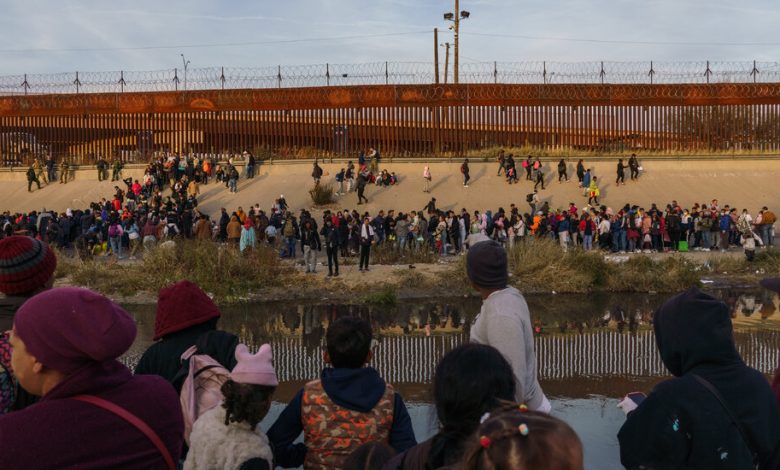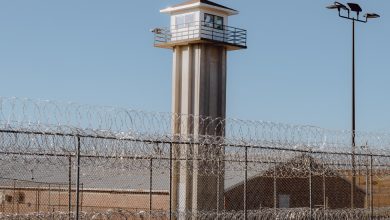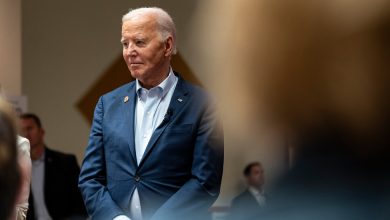Border Program to Expel Migrants Must Stay in Place for Now, Supreme Court Says

WASHINGTON — The Supreme Court said on Tuesday that a pandemic-era health measure that restricted migration at the southern border would remain in place for the time being, delaying the potential for a huge increase in unlawful crossings.
In a brief, unsigned order, the justices halted a trial judge’s ruling that would have lifted the measure, known as Title 42, that allowed even migrants who might otherwise qualify for asylum to be swiftly expelled at the border.
The court said that it would hear arguments in the case in its February sitting and that the stay would remain in place until it issued its ruling. The justices said they would address only the question of whether the 19 mainly Republican-led states that had sought the stay could pursue their challenge to the measure.
Justices Sonia Sotomayor, Elena Kagan, Neil M. Gorsuch and Ketanji Brown Jackson dissented.
Justice Gorsuch, joined by Justice Jackson, said the legal question the court agreed to address, about the states’ intervention, “is not of special importance in its own right and would not normally warrant expedited review.”
By issuing a stay while it addressed that question, he added, the court effectively took an incorrect position, at least temporarily, on the larger issue in the case: whether the coronavirus pandemic justifies the immigration policy.
More on U.S. Immigration
- Title 42: As the Supreme Court reviews a request to keep in place the pandemic-era policy that has been used to block migrants from seeking asylum, a tense limbo has pervaded both sides of the border.
- Arizona: The state’s outgoing governor agreed to tear down a makeshift border wall built out of old shipping containers, ending a divisive border security effort that sparked protests and legal challenges.
- Texas: Officials in the state took steps to all but close an international crossing in El Paso, which has become a main destination for immigrants seeking to enter the United States.
- Tech Workers: As cutbacks batter the tech industry, some foreigners on work visas are facing a daunting prospect: having to leave the United States unless they are hired within 60 days of being laid off.
“The current border crisis is not a Covid crisis,” Justice Gorsuch wrote. “And courts should not be in the business of perpetuating administrative edicts designed for one emergency only because elected officials have failed to address a different emergency. We are a court of law, not policymakers of last resort.”
Justices Sotomayor and Kagan did not join Justice Gorsuch’s dissent and gave no reasons for their votes against granting the stay.
The court’s order was a provisional victory for the 19 states that had sought to keep Title 42 in place, saying it was needed to prevent a surge of border crossings. “The failure to grant a stay will cause a crisis of unprecedented proportions at the border,” lawyers for the states wrote in an emergency application, adding that “daily illegal crossings may more than double.”
The White House indicated that it would comply with the Supreme Court’s order and prepare for its review. “At the same time, we are advancing our preparations to manage the border in a secure, orderly and humane way when Title 42 eventually lifts and will continue expanding legal pathways for immigration,” said Karine Jean-Pierre, the White House press secretary. “Title 42 is a public health measure, not an immigration enforcement measure, and it should not be extended indefinitely.”
The measure was issued by the Centers for Disease Control and Prevention and has been used to expel migrants — including many asylum seekers — more than 2.5 million times since it went into effect in March 2020, according to federal data.
“We are deeply disappointed for the desperate asylum seekers who will continue to be denied even the chance to show they are in danger,” said Lee Gelernt, a lawyer with the American Civil Liberties Union, which represents migrants challenging the measure. “But this ruling is only temporary, and we will continue this court battle.
Judge Emmet G. Sullivan, of the Federal District Court in Washington, ruled last month that the measure did little to advance public health and much to endanger immigrants.
He set a Dec. 21 deadline for ending the program. A unanimous three-judge panel of the U.S. Court of Appeals for the District of Columbia rejected the states’ request for a stay, saying they had waited too long to try to intervene in the case, which had been brought by migrant families seeking to end expulsions under the health measure.
But Chief Justice John G. Roberts Jr. issued a brief stay on Dec. 19, meant to maintain the status quo while the full court considered the matter.
Lawyers for the immigrants said the health measure does not justify thwarting the ability of people fleeing violence to apply for asylum.
“The states do not even try to justify continued Title 42 expulsions on public health grounds,” the immigrants’ lawyers told the justices. “Nor could they, in an era of vaccinations, testing and greater certainty about the disease. Their concerns arise not from Covid-19, but from immigration itself — and that is a matter to take up with Congress, not this court.”
The Republican-led states responded that without the measures, border states would face an overwhelming influx of migrants, adding that the case also has broader implications.
“This case presents an opportunity for this court to address the district court’s misguided attempt to constrain C.D.C.’s authority to use Title 42 to protect public health in future pandemics,” they wrote. “The consequences are not limited to the present dispute: The district court’s ruling will hamstring emergency action by C.D.C. to prevent aliens with communicable diseases from entering the United States in the future.”
With Title 42 in place, in most cases, migrants were returned to Mexico or to their home countries. In practice, however, many migrants have been allowed to stay in the country until they face removal proceedings because of humanitarian exemptions or because some are from countries that have strained diplomatic relations with the United States.
Human rights advocates have long criticized the public health rule for giving border officials the authority to quickly expel migrants without any sort of due process or opportunity to seek refuge from persecution. They have also argued that the policy has no public health benefit.
Though both the Trump and Biden administrations argue that the order is one of public health and not immigration enforcement, it has become a critical force in managing a staggeringly high number of illegal crossings at the southwestern border. Other enforcement options take much longer, particularly when migrants state that they are afraid to return to the country they fled.
Miriam Jordan contributed reporting from Los Angeles.




